What are Custom Foot Orthotics?
Custom foot orthotics are bespoke devices made specifically for your foot and your condition.
This means they will be tailored exactly to you and not created based on a generic template.
We are able to customise the foot orthotic to suit your footwear, lifestyle and presentation depending on the outcome of the assessment we provide. We do it by hand. Our foot orthotics are made in our own workshops and never centrally fabricated.
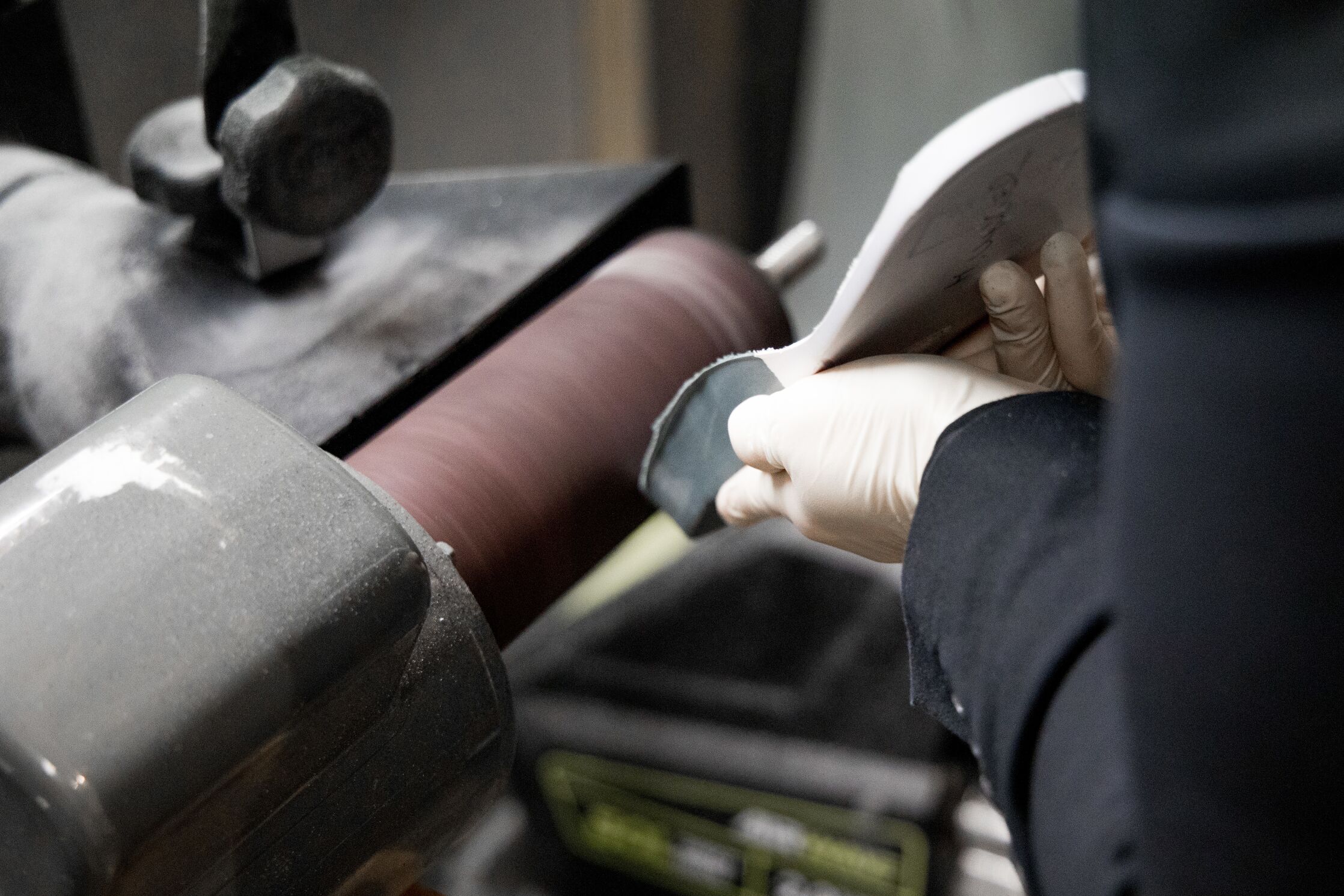
How do Custom Foot Orthotics Work?
- If we provide support and correction to the foot, we can address many issues by protecting or reducing the load on the stressed tissues.
- By supporting the bony structures of the foot we can offload tired overworked muscles and encourage the activation of other muscles which may not be as active due to the malalignment.
- Foot orthotics will not magically heal your issue, only your body can do that, but we will encourage an environment that will make this possible. Most patients do notice immediate pain relief when wearing their foot orthotics.
- Foot orthotics are best used in conjunction with suitable footwear, which your Orthotist can advise you on.
Customised To Your Foot Shape
Foot Orthoses can be custom made or pre-fabricated. To ensure maximum functionality almost all foot orthoses are custom made. At Orthotics Plus we fabricate full length and ¾ foot orthoses from Ethyl Vinyl Acetate (EVA) – a dense foam. Foot Orthoses will vary from person to person depending on the pathology that needs to be treated.
Features of custom foot Orthotics may include:
- Medial wedge
- Lateral wedge
- Medial arch support
- Plantar fascia groove
- Metatarsal domes
- Reliefs for bony or painful prominence
- Soft spots in the heel
- Ledge for an elevated first ray

Advantages of Choosing Orthotics Plus
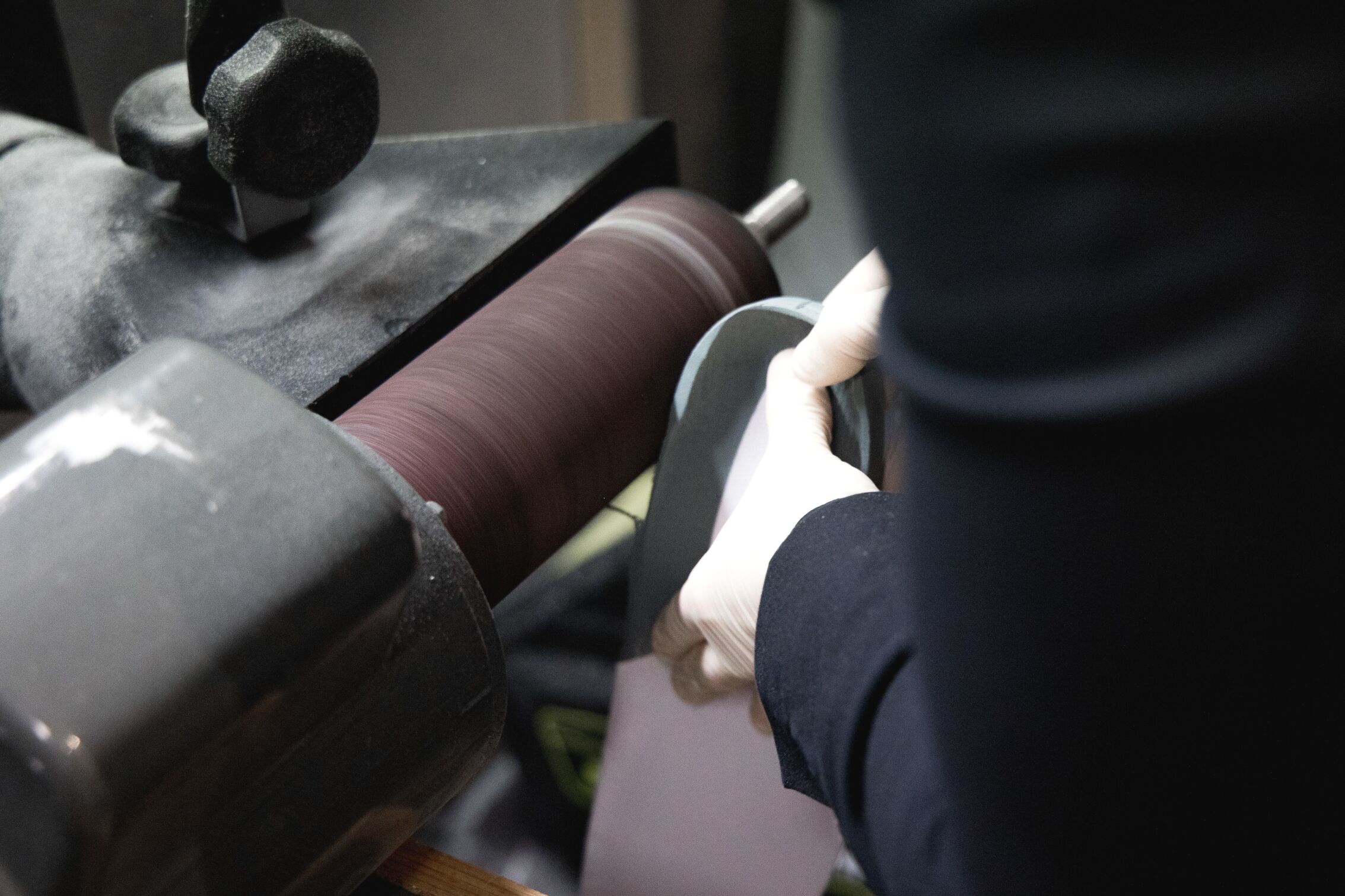
Expertise & Experience
We are the custom foot orthotics experts.
We stand behind our product and will offer honest advice from a wealth of experience. All Orthotists in our clinic have been actively working for over 10 years
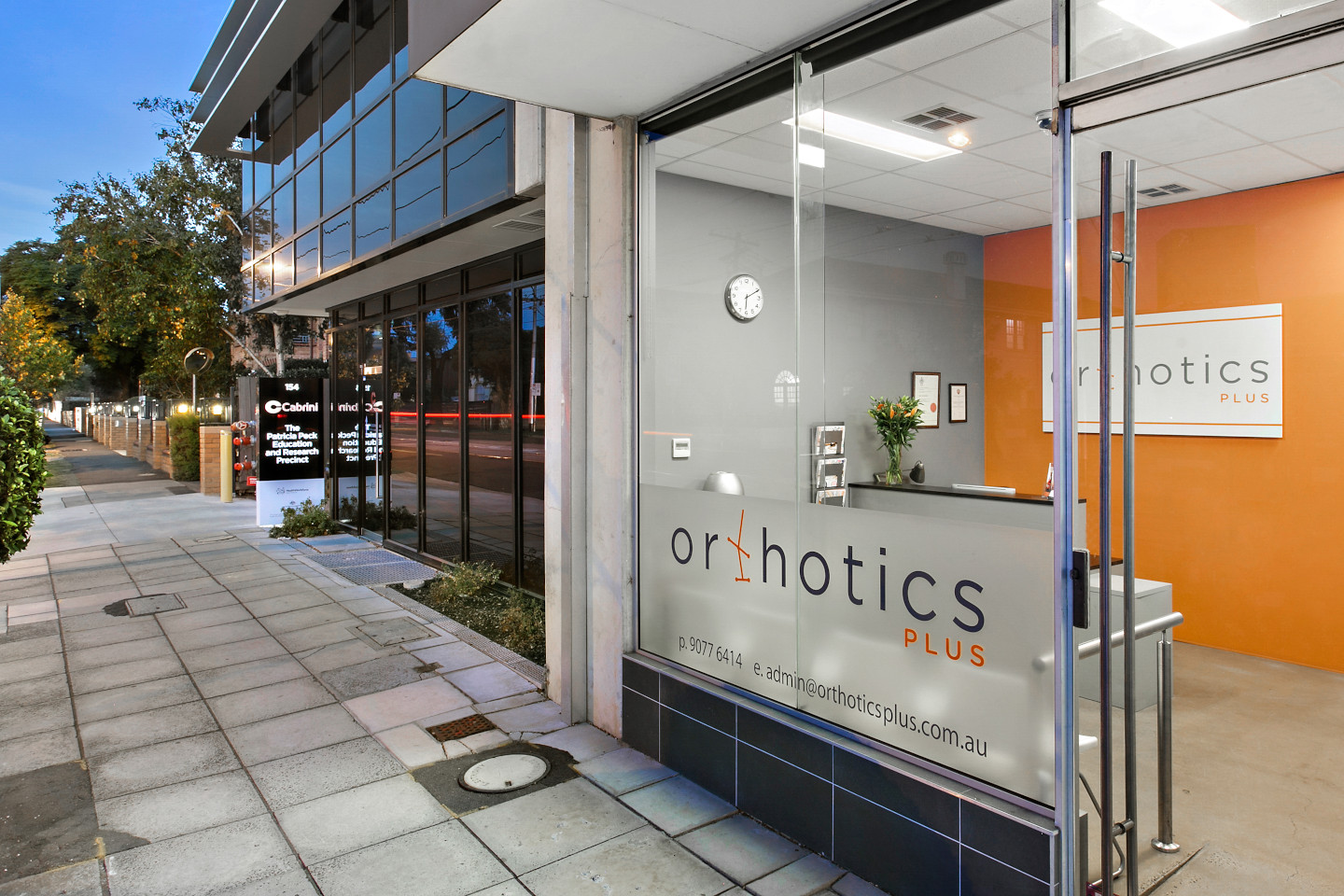
A Trusted Clinic
We are the clinic of choice for many of Melbourne’s leading orthopaedic foot & ankle surgeons.
Approximately 60% of our custom foot and ankle work comes on referral from people in the know.
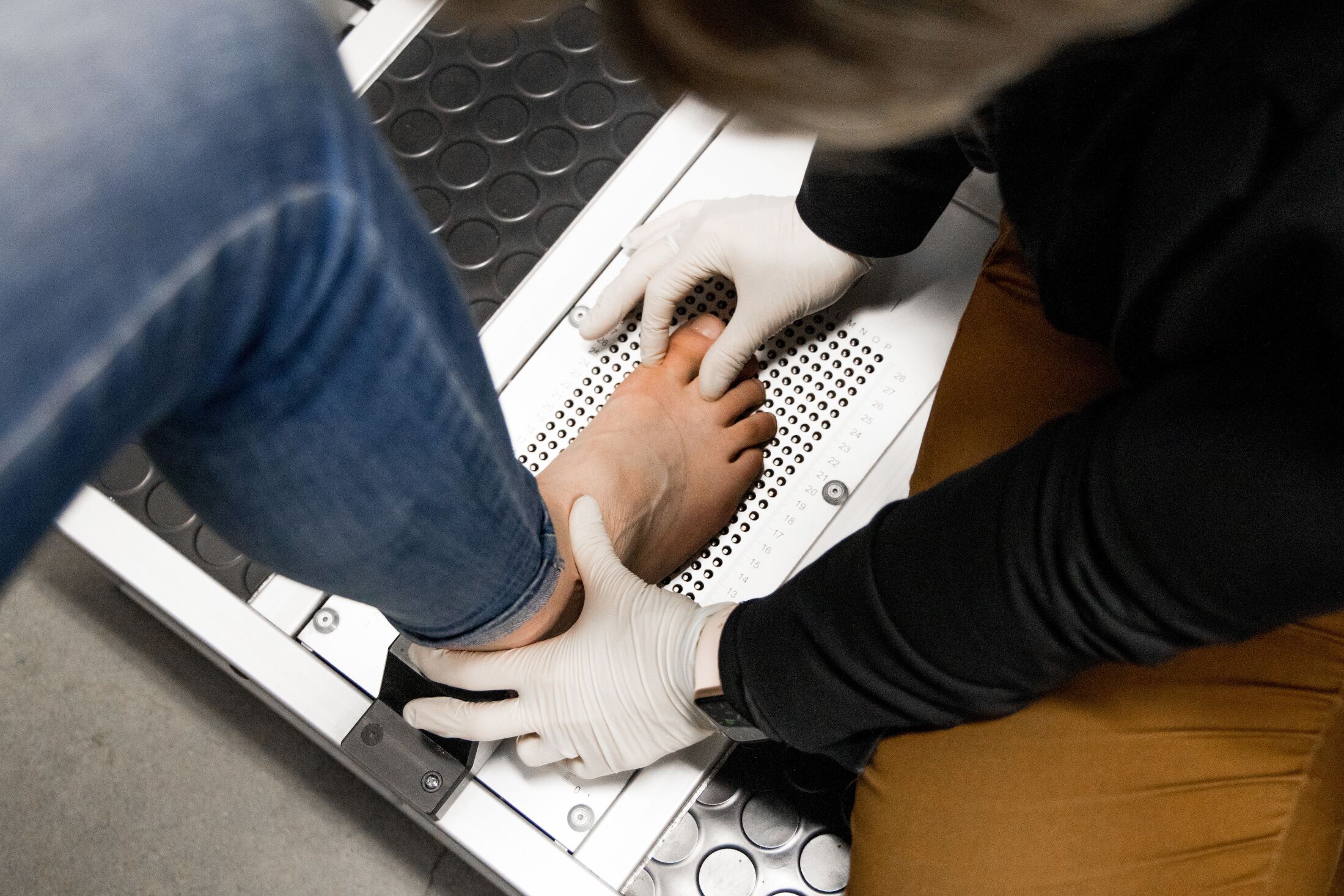
Handmade Orthotics
The clinician who takes your measurements and conducts the assessment will be the clinician who designs and makes your Orthotics.
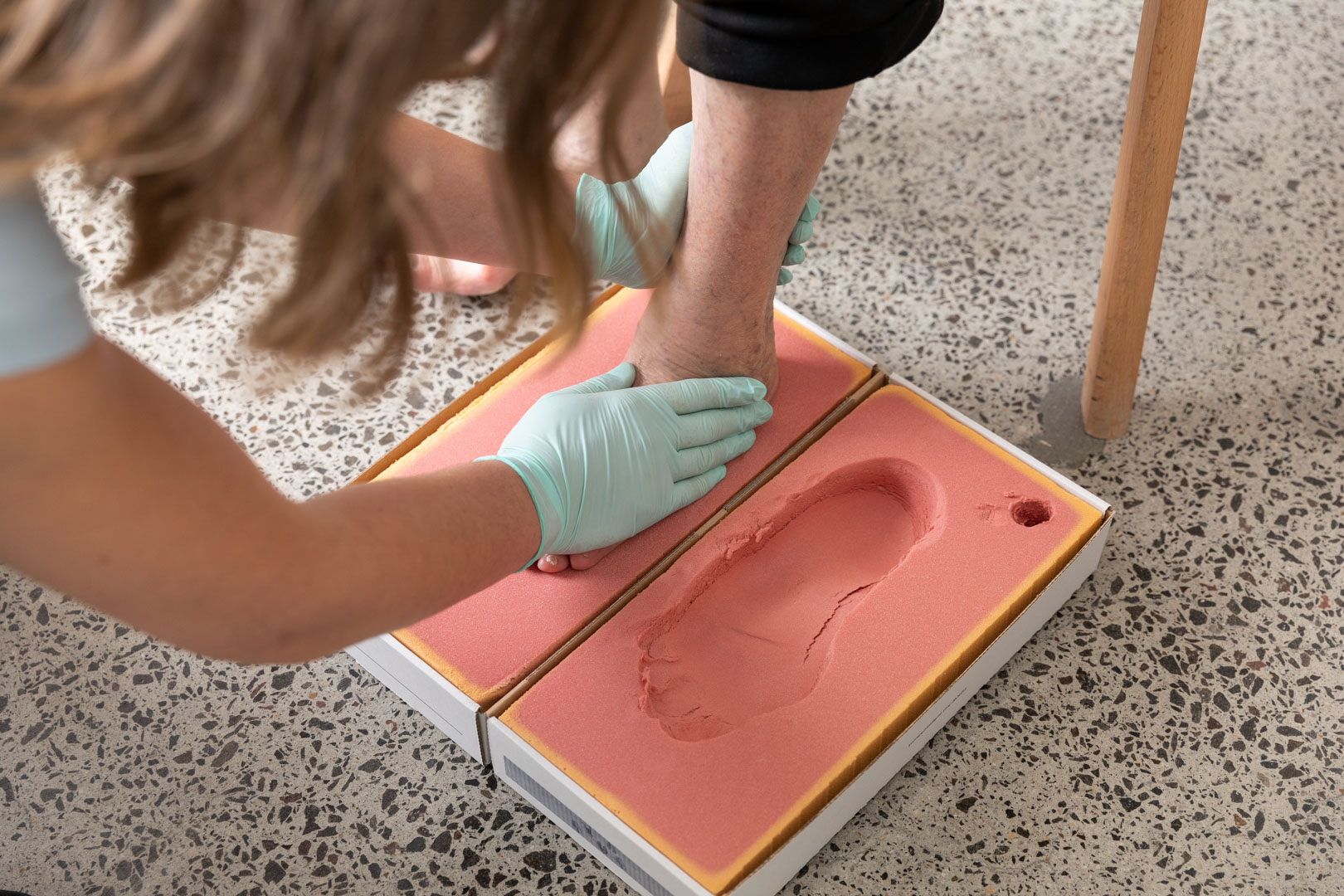
Fast Turnaround
We understand that you don’t want to put up with pain any longer than you need to.
Our devices can be finished and ready for fitting within a week.
Explore Foot Treatments
-
Learn More +
Arch Support Insoles
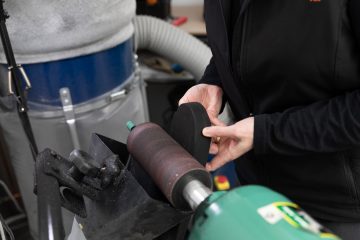
-
Learn More +
Insoles for Flat Feet
Hand-made Foot Orthotics
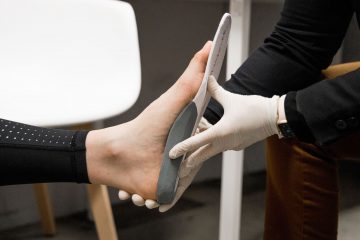
-
Learn More +
Claw Toes
Custom Treatments & Footwear
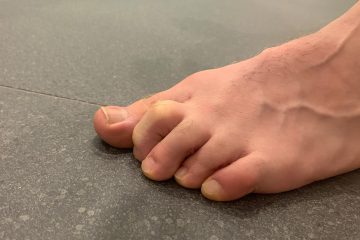
-
Learn More +
Plantar Fasciitis
Individualised Treatment
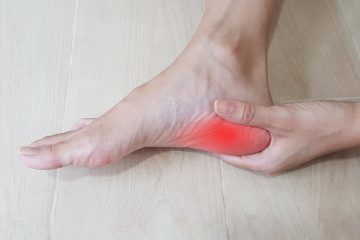
-
Learn More +
Metatarsalgia Pain
Experienced with Metatarsalgia Supports
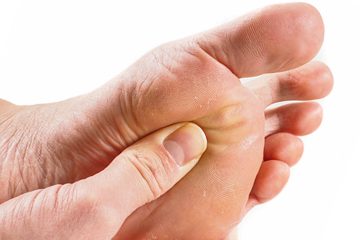
-
Learn More +
Morton’s Neuroma
Footwear, Orthotics & Treatment

-
Learn More +
Midfoot Arthritis
Assessment & Support
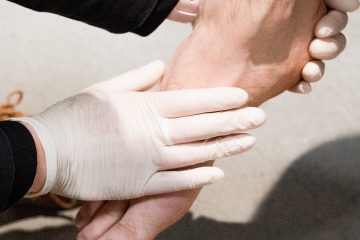
-
Learn More +
Flat Feet
Flat Feet & Deformities
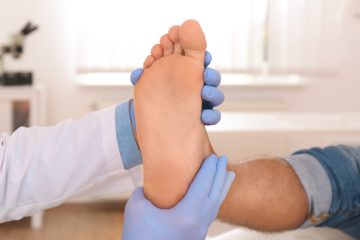
-
Learn More +
Heel Pain
Multiple Treatment Pathways
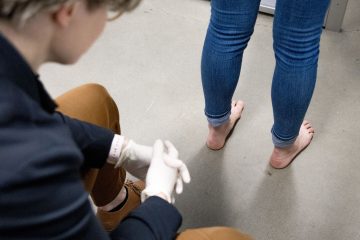
What is the Orthotics Plus Difference?
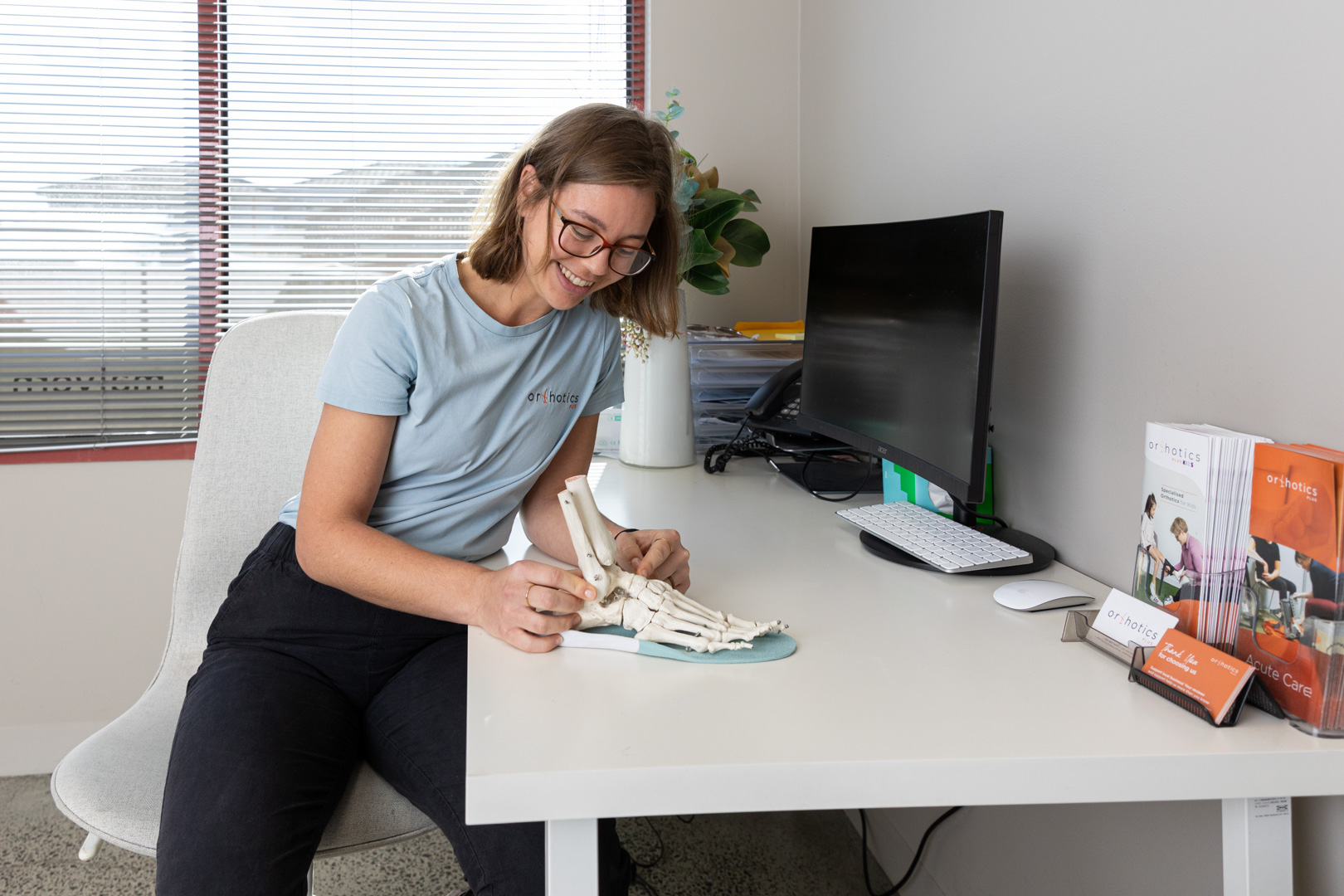
We never use hard plastics. Our custom foot orthotics are made from high-quality EVA (Ethyl Vinyl Acetate), a shock-absorbing material that provides excellent support and control while being much more comfortable than plastic.
EVA allows us to make small adjustments during your fitting appointments, ensuring your orthotics are tailored to both your feet and your footwear. While many clinics opt for plastic because it’s cheaper and easier to produce off-site, we believe comfort and function come first.
All of our custom foot orthotics are manufactured on-site using premium EVA. Although this process takes more time, it delivers better results in terms of comfort and performance.
We’ll never leave you with uncomfortable orthotics. We can make adjustments during your fitting and throughout your free follow-up period to make sure they feel right and work well for you.
Custom Foot Orthotics FAQ
For all initial appointments we charge a $80 consultation, where we can openly discuss what is required and the costs involved prior to committing to purchasing orthotics.
The cost for your initial pair of custom made foot orthotics is $595. This includes the following:
- Scanning and modifying
- Fabricating
- Fitting
- Reviews for up to 3 months
If you would like a second pair of foot orthotics identical to your first for convenience or to suit other shoes, they are $395.
If you are uncertain as to whether we can assist with your foot condition, we would recommend coming in for the initial consultation to discuss.
For kids who are growing and changing regularly, we have some “off-the-shelf” options that are more affordable considering they will need to be replaced more regularly.
The structure of our foot orthotics will last almost indefinitely, the shape may begin to change after a couple of years though, so we suggest a review appointment if you feel like you require more support or things have changed.
Top covers which are primarily aesthetic and used for hygiene tend to wear out more quickly and we can recover them for you in one 10-15 minute appointment.
1) Assessment
We will start by asking you about your history and lifestyle, progressing to a thorough assessment of the foot, ankle, knee and hip and some gentle palpation of the affected/painful areas.
Measurements may be taken at this point, particularly joint angles.
We will then conduct a full gait analysis and report in plain terms our assessment and findings and begin to formulate our prescription.
2) Capturing
Based on the assessment, we will capture a physical or digital impression of your foot.
For particularly troublesome feet we will manipulate the foot into a corrected position and take a physical impression and sometimes even cast the feet in the position we need using plaster.
3) Modification
We will create either a plaster or digital representation of your foot and modify accordingly.
This is dependent on the assessment but usually involves increasing the arch height, correcting the hindfoot, offloading any prominent or painful areas and generally correcting the
biomechanics of the foot to resolve the issue you presented with.
This is done by a tertiary-educated professional orthotist who has studied in-depth, lower limb anatomy and biomechanics.
4) Manufacture
Our orthotics are made in Orthotics Plus’ onsite workshop laboratory.
Unlike the vast majority of podiatry groups in Australia, we will never outsource our custom foot orthotics to be made by a central fabrication group. The clinician who assessed your foot will be the clinician who creates your orthoses.
We use high density EVA in our orthotics. This material is more expensive than plastic, increasing our cost of manufacture and the time required, but it has excellent properties which lend to foot orthotics perfectly.
The EVA is either milled by our carving machine into the design created by the orthotist or heated and vacuum formed over the cast in multiple layers to capture the shape required.
5) Fitting
The foot orthotic is then hand finished by the orthotist to fit your shoe and comfortably correct and
support your foot.
After the fitting has been deemed successful, we will generally cover the device with a material (usually fabric, leather or synthetic) for hygiene and aesthetic purposes.
Foot orthotics can be broken into 3 sections and the options available at each segment can be used in combination. The design and features used will depend on your assessment and what we are aiming to achieve.
Here are some common features of a foot orthotic.
Hindfoot
Heel cupping, selective offloading (ie for heel spurs), wedging, height increase (to alter ankle pitch or accommodate for a leg length discrepancy)
Midfoot
Selective offloading (ie plantar fascia grooves), medial arch support, arch control, lateral arch support, transverse arch support
Forefoot
Forefoot wedging, metatarsal domes, selective offloading, metatarsal cut outs, hallux cut outs
The density of the material we use for the device will also vary according to height, weight, age, activity and clinical presentation.
The answer to this question is generally based on these factors:
Pain
If you have a high level of lower limb and foot pain, your pain is worsening, or your foot pain has been persisting for a longer time we may be more inclined to suggest foot orthotics. If your foot pain is low and reducing then we may suggest other options first.
Age
If you are younger and growing, or older and not healing as well or the pain is limiting your mobility foot orthotics may be required.
Biomechanics – An assessment of the structure and function of your foot will assist this decision. If during the assessment and gait analysis we note issues we can immediately address, foot orthotics may be a good option for you. (e.g. hyper mobility, flat feet, very high arched feet, pronated foot posture, bony prominences, painful rigid joints, osteoarthritis, foot structures which cause torsional forces in the foot).
History
What have you done previously? Have you tried other options or changed your footwear recently? Have you recently started training for a marathon? Are you noticing your feet change shape?
The answers to these questions will assist us to determine a course of action. If there are things we can modify in your life such as activity level we will advise accordingly.
Diagnosed conditions
If you have a particular condition which we know responds well to foot orthotics we will be more inclined to suggest foot orthotics as a treatment.
We will ensure your foot orthotics are comfortable. We offer unlimited appointments for 3 months after fitting to solve any fitting and comfort issues.
Our orthotists can adjust the devices on the spot without the orthotics being sent away, so it will not require excess appointments or long wait times to fix issues.
If it is required they are remade due to an error on our behalf, there will be no charge for this.
It’s normal for foot orthotics to require a wearing in period and there to be some discomfort.
This discomfort is generally muscular as patterns are broken and different (often neglected) muscle groups are used. There may also be some light skin rubbing as areas which were previously non-weightbearing take load and the tissue adapts. This is normal. This usually resolves in a short time frame and many people forget they’re even wearing them.
For the cases when issues do not resolve quickly, we will offer unlimited (within reason!) appointments in the following 3 months after prescription until the foot orthotics are deemed satisfactory to you.
We will ensure your foot orthotics are comfortable. We offer unlimited appointments for 3 months after fitting to solve any fitting and comfort issues.
Our Orthotists can adjust the devices on the spot without the orthotics being sent away, so it will not require excess appointments or long wait times to fix issues.
If it is required they are remade due to an error on our behalf, there will be no charge for this.
We never use hard plastics! We manufacture our foot orthotics from EVA. This shock absorbing material is much more comfortable for the foot while still allowing excellent support and control to be built into the orthotic.
We are yet to see a patient prefer a hard plastic foot orthotic over an Orthotics Plus EVA device.
Reasons for the continuing popularity of plastic foot orthotics is they are cheaper and easier to produce and are often made ‘en masse’ at a central location by machine.
At Orthotics Plus we use varying densities of foam EVA as this allows the foot to be supported, while providing the comfortable relieving shock-absorbing values most suited. Many of our older patients need a soft EVA, while our heavier and more athletic patients use a higher density material.
As we don’t outsource to external technicians or manufacturing hubs we can modify the foot orthotics on the spot and customise it to you. This means we can fit the orthotic in nearly all shoes and modify the device without the need for multiple annoying trial and error style appointments.
No. This is a common myth. When used correctly foot orthotics do not ‘take over’ the role of muscles in your feet, leaving them lazy and ineffective.
They correct a biomechanical issue and rebalance and normalise the muscle activity in your feet. Many studies and even a systematic review have found a more normalised muscle activity in patients with a flat foot deformity when using foot orthotics.
When aligned correctly the foot will work more efficiently as the muscles and joints are not at the extreme end range of their possible range of motion. Muscles generally work more efficiently and can produce more strength during the middle of the range of motion of the respective joint they
control.
Additionally, a foot which has a corrected posture will provide a better and efficient structure for human gait during running, walking or sports.
Many elite athletes wear foot orthotics and we regularly see athletes to assist with their chosen sports.
Foot orthotics maybe a piece of the puzzle but are rarely the entire solution. We will discuss all the other factors which have contributed to the pain or issue and advise as such.
This may be better selection of footwear, behavioural modifications and lifestyle modifications just to name a few.
We may also prescribe a lower limb stretching and strengthening regime where indicated to assist with the orthotic management and support your recovery, particularly in the case of plantar fasciitis.
When required we will refer you to a specialist if it is outside of our scope of practice. i.e. dietary
advice or surgical intervention.
We don’t believe in hard plastic foot orthotics for the reasons below:

Plastic reduces mobility
The foot is a mobile structure with many joints and the body’s primary shock absorber. We don’t want to take away the mobility of the foot as we are likely to create other problems higher up the chain. Using a dense foam/EVA allows the foot to continue to be a shock absorber whilst correcting biomechanics.

Plastic orthotics are painful
Many patients find them to be unforgiving and painful, requiring a long wearing in period and can be the cause of many issues. We regularly see patients in our clinic with previously made hard plastic foot orthotics complaining of bruises and even blood blisters from stepping on the sharp heel cup of the plastic foot orthotics.

Plastic is difficult to modify
Hard plastic foot orthotics are difficult to modify by the clinician during the appointment. This may lead to the incorrect prescription or an uncomfortable device being encouraged to be kept as the re-manufacturing process is time consuming and potentially expensive.

Plastic will wear quickly
The covers of hard plastic foot orthotics generally wear very quickly as they are guillotined between the foot and a hard plastic shell. Even when topped with foam for softness, we find this material disintegrates within a few months, requiring repair or most commonly the patient just ends up walking on a hard plastic base with no cover.
The human foot is made up of 26 bones, 33 joints and over 100 tendons, ligaments and muscles.
This structure is remarkable in its function, however, things do go wrong. The result may be acute pain, inefficient biomechanics, stress injuries, chronic issues or bad posture of the foot leading to ankle, knee, hip and back pain amongst other problems.
Some patients with knee osteoarthritis find foot orthotics and suitable footwear will reduce some pain in their knees as the ground reaction force is shifted to the less damaged region of their knee.
Orthotics Plus - Case Studies
Case Study 1
John
Age
53
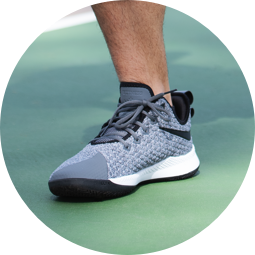
John (an active 53 year old male) visited Orthotics Plus for a second opinion about his newly made hard plastic foot orthoses. His newly purchased and rather expensive orthotics weren’t providing him any pain relief from his lateral ankle impingement and pain down the lateral (outside) aspect of his foot, despite multiple follow up appointments.
Our orthotists conducted an assessment and a full gait analysis. On observation it was noted he had a normal hindfoot posture on heel strike with a varus forefoot posture. From heel strike to foot flat the lateral aspect of his foot would strike the ground first and his 1st metatarsal was elevated. As his weight was accepted by the forefoot, his midfoot would rotate to allow his forefoot to reach the ground which would cause his hindfoot to violently evert (resulting in a valgus calcaneus> causing his lateral ankle impingement) to allow the more medial aspect of his forefoot and finally 1st metatarsal to eventually make contact with the ground until toe off, when the process would start again.
Show more
The hard plastic foot orthotics were little more than an arch support which in this case was not the prescription needed. John’s predominant issue was a varus forefoot, led by a dropped 5th metatarsal and an elevated 1st metatarsal.
Orthotics Plus manufactured a custom foot orthosis which cushioned the hindfoot and cradled the heel, supported the arch during foot flat, restored the midfoot transverse arch and using a forefoot wedge and 5th ray cut out controlled the forefoot to prevent the rotative force driven through the foot as the 5th metatarsal made contact with the ground. We also offloaded the metatarsal heads. John had previously been suggested to wear a strong pronation control shoe. We strongly suggested a neutral soled shoe to avoid extra stress being placed through the lateral forefoot.
John’s lateral ankle pain was resolved very quickly and on review 2 weeks later the pain in his lateral foot had also resolved. John felt he was able to run for longer periods and felt like his gait was more efficient with less internal rotation transmitting up his tibia into his knees.
Show less
Case Study 2
Judy
Age
75
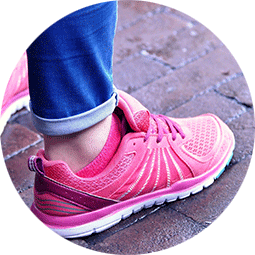
Judy (a moderately active 75 year old female) presented to the clinic with generalised midfoot pain (Right>Left), a hot ache down the medial right ankle and a feeling of instability on her right side. She felt like her feet has started to change shape. She had never worn foot orthotics before and presented to the clinic wearing flat unsupportive footwear.
Our orthotists conducted a full assessment and gait analysis. It was noted that the right medial longitudinal arch collapsed more during transition to foot flat and toe off than the left side. Judy was unable to perform a single leg heel raise on her right side but was able to do so partially on her left side.
Judy also felt that when she was walking unshod on hard surfaces or with unsupportive shoes it felt like she was ‘walking on marbles’.
Show more
It was concluded that Judy was experiencing tibialis posterior tendon dysfunction, bilaterally with the right side worse than the left. Secondarily the loculated fat padding underneath her metatarsal heads had diminished which caused her sensation of ‘walking on marbles’.
A mould was taken of her feet in the corrected position of subtalar neutral with the great toe extended to engage the windlass mechanism of the plantar aponeurosis and induce as much arch as possible. In a fantastic display of customer service, our orthotist then went to the shoe shop with Judy and her daughter to help select a pair of shoes which would be suitable.
During modifications the arch height did not need to be increased as this was captured during the impression. The foot orthotics were made of dual density EVA so the arch and hindfoot would experience as much support as possible while the forefoot bony prominences would be comfortably padded. A gentle metatarsal dome was added to help alleviate the forefoot pressures.
Judy had reduced pain in her right midfoot and medial ankle when wearing the foot orthotics and felt she had reduced symptoms related to a feeling of instability. It was explained to Judy the progression of the foot deformity can be treated and slowed or ceased with correct prescription of foot orthotics and selection of footwear and a correct wearing regime.
Show less
Case Study 3
Luke
Age
28
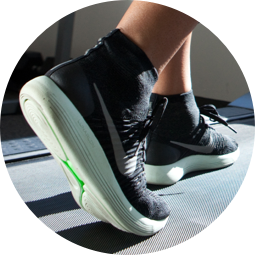
Luke (an active 28 year old male weighing approx. 105kgs and working as an electrician) presented to the clinic due to persistent arch pain and general foot soreness after playing football or working on his feet all day. He had never worn foot orthotics before but had tried purchasing insoles from the Chemist. He presented wearing flat casual shoes but said he generally wore lace up work boots.
The clinician performed a full gait analysis and assessment. On observation it was noted Luke had extremely flat feet (pes planovalgus) and was experiencing hyper-pronation.
The foot was passively corrected into a position with an increased arch height via manual manipulation and an impression was taken of both feet.
During the modification process Luke’s medial arch height was increased further, and an inbuilt metatarsal dome to offload the forefoot was added.
Show more
Due to Luke’s high activity level and weight, a higher density EVA was selected. Hindfoot medial wedging was added to attempt to straighten the hindfoot.
On fitting the foot orthotic was customised to suit his football boots and workboots. It was strongly suggested that a more supportive pair of casual shoes were sourced which had a better structure and more support.
On review Luke was extremely happy with the results. He was able to work a full day on his feet without the arch pain and felt much less discomfort in his feet. After a wearing in period he was able to play out a full game of football without pain and felt that his balance and ability to run and change direction more quickly was improved. He stated that he felt like he would run and stand ‘flat footed’ prior to fitting and felt more ‘dynamic’ when wearing the foot orthotics.
Show less